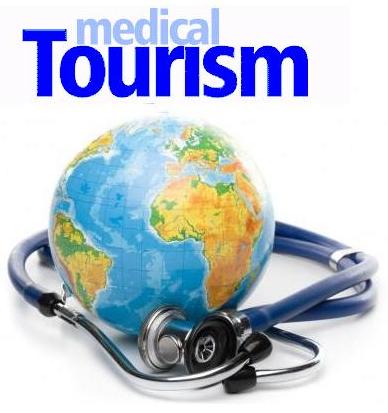 One of the unfortunate realities of Canada’s monopolistic health-care system is that some people feel they have no choice but to seek the care they need outside the country.
One of the unfortunate realities of Canada’s monopolistic health-care system is that some people feel they have no choice but to seek the care they need outside the country.
Faced with waits for treatment that are often months long (sometimes stretching over a year), it should come as little surprise that many Canadians ultimately choose to be medical tourists. The question of course, is how many?
While data on exactly how many patients seek treatment abroad are not readily available, it is possible to estimate this number using data from the Fraser Institute’s annual waiting list survey and from the Canadian Institute for Health Information.
The Fraser Institute’s annual waiting list survey asks physicians in 12 major medical specialties what percentage of their patients received non-emergency medical treatment outside Canada in the past year. In 2013, averaged across all medical specialties, almost 1 per cent of patients in Canada were estimated to have done so, the same as in 2012.
Putting these numbers together with data on the number of procedures performed in Canada from the Canadian Institute for Health Information reveals that a conservatively estimated 41,838 Canadians received treatment outside the country in 2013.
Interestingly, this year’s estimate is a slight decrease from the 2012 estimate of 42,173. At the same time, the wait time from specialist consultation to treatment in Canada increased from 9.3 weeks in 2012 to 9.6 weeks in 2013.
Among the provinces, the estimated number of patients going outside Canada for treatment increased in Manitoba (1,636 this year vs. 1,435 last year), Ontario (19,118 vs. 15,725), and Nova Scotia (927 vs. 858). The figure was roughly the same for B.C. (8,146 vs. 8,132). On the other hand, the number fell in Alberta (5,527 vs. 6,661), Saskatchewan (714 vs. 1,380), Quebec (4,904 vs. 6,308), New Brunswick (372 vs. 997), P.E.I. (8 vs. 28), and Newfoundland (486 vs. 649).
Among the 12 medical specialties, the largest numbers of patients receiving care outside Canada were estimated for urology (6,635), general surgery (5,537), and ophthalmology (3,083). Patients were less likely to be receiving cardiovascular surgeries (114), radiation treatment for cancer (127), and chemotherapy for cancer (249) in another country.
Those numbers are not insubstantial. They point to a sizable number of Canadians whose needs and health care demands could not be satisfied in Canada. They also point to a large market of patients that might choose to remain in Canada (and in their home province) if only they had that option. One can only wonder how many more would have liked to join them, but couldn’t afford the travel on top of the privately funded care.
There are a number of possible reasons why Canadians ultimately received the care they required outside of the country. Some may have been sent abroad by the public health care system because of a lack of available resources or the fact that some procedures or equipment are not provided in their home jurisdiction. Others may have left in response to concerns about quality, seeking out more advanced health care facilities, higher tech medicine, or better outcomes. Others may have fled Canadian health care in order to avoid some of the consequences of waiting for care such as worsening of their condition, poorer outcomes following treatment, disability or death. And some may have done so simply to avoid delay and to make a quicker return to their life.
That a considerable number of Canadians travelled and paid to escape the well-known failings of the Canadian health care system speaks volumes about how well the system is working for them. It leaves open the question of just how many more Canadians might choose medical tourism outside Canada if given the opportunity.
Nadeem Esmail is director of health policy studies at the Fraser Institute. Bacchus Barua is a Fraser Institute senior economist.
Source: the spec

